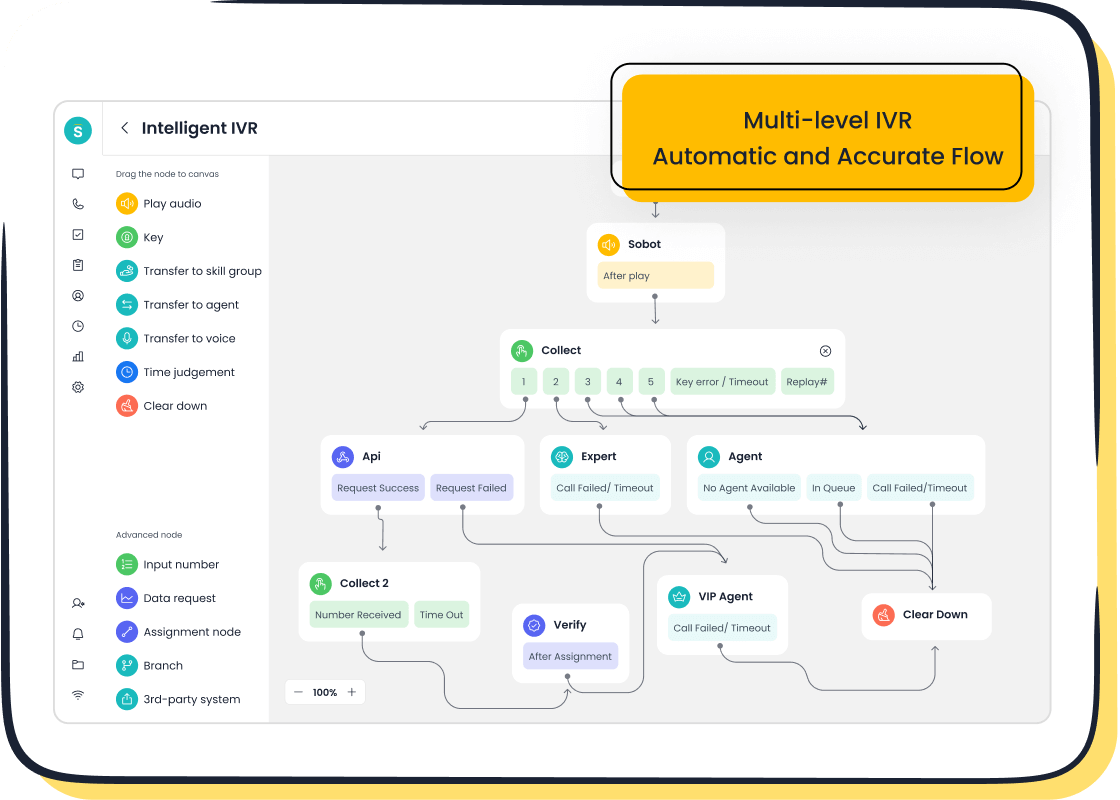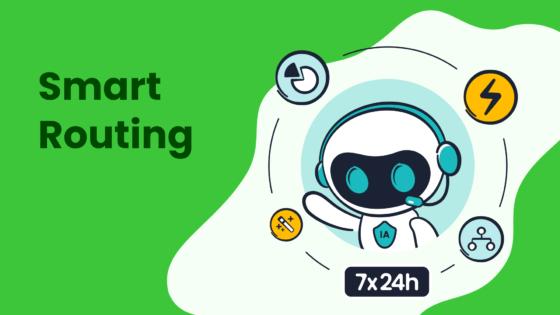Understanding Customer Effort Score through Real-Life Examples

Customer effort score calculation measures how easy it is for your customers to interact with your business. It focuses on the effort customers must put in to resolve issues, complete purchases, or get support. Lower effort means higher satisfaction. Research shows that 94% of customers who experience low-effort interactions intend to repurchase. Additionally, 88% are likely to spend more when their experience feels effortless.
High customer effort often leads to disloyalty. For example, 96% of customers with high-effort experiences become disloyal, compared to only 9% with low-effort ones. This makes customer effort score 1.8 times more predictive of loyalty than customer satisfaction metrics. Tools like Sobot’s solutions simplify customer interactions, ensuring positive outcomes for your business.
What Is Customer Effort Score (CES)?
Definition and Purpose of CES
Customer Effort Score (CES) is a customer feedback metric that evaluates how easy it is for your customers to interact with your business. It focuses on the effort required to resolve issues, complete purchases, or access information. CES surveys typically include a straightforward customer effort score question, such as, “How easy was it to solve your problem today?” Responses are collected on a scale, often ranging from "very easy" to "very difficult."
The purpose of CES is to identify areas where your customers face challenges and to simplify those interactions. By reducing customer effort, you can improve satisfaction and loyalty. For example, Sobot’s Voice/Call Center uses intelligent IVR systems and AI-powered voicebots to streamline customer communication, making interactions effortless and efficient.
Why CES Is Crucial for Customer Experience
Customer effort plays a pivotal role in shaping customer experience. When interactions are easy, customers feel valued and are more likely to return. Conversely, high-effort experiences can lead to frustration and disloyalty. Industry reports highlight several reasons why CES is essential:
- Simplifying processes and improving communication enhances customer experience and fosters loyalty.
- CES survey data helps pinpoint problem areas, enabling you to refine your services.
- A seamless checkout process reduces cart abandonment, while a complex one increases customer effort.
For instance, a major retailer used CES data to streamline its return process. This change reduced customer effort and boosted satisfaction, demonstrating how CES insights can transform customer experience.
Key Benefits of Measuring CES for Businesses
Measuring CES offers several advantages for your business:
- Improved Retention: A SaaS company simplified its onboarding process based on CES feedback, leading to higher user retention and satisfaction.
- Enhanced Loyalty: By addressing CES feedback, a tech firm strengthened client relationships and improved satisfaction.
- Operational Efficiency: CES data helps identify inefficiencies, allowing you to optimize workflows and reduce costs.
Sobot’s Omnichannel Solution exemplifies how CES insights can drive improvements. Its unified workspace consolidates customer data, enabling personalized service and reducing effort across multiple channels. With real-time feedback and analytics, you can continuously refine your processes to meet customer expectations.
Customer Effort Score Calculation: Methods and Examples
Standard Formula for CES Calculation
To calculate the customer effort score, you need to analyze responses from a CES survey. The standard customer effort score formula involves determining the percentage of positive responses (e.g., "very easy" and "easy") and subtracting the percentage of negative responses (e.g., "very difficult" and "difficult"). This approach provides a clear picture of how effortless your customers find their interactions with your business.
For example, if 70% of respondents rated their experience as "easy" or "very easy," and 10% rated it as "difficult" or "very difficult," the CES would be 70% - 10% = 60%. This score reflects the overall ease of interaction.
Alternatively, you can use other methods to calculate the effort score. The table below outlines three common approaches:
| Method | Description |
|---|---|
| Method 1 | Average score calculation using a 1-10 scale. Total CES scores divided by the number of responses. |
| Method 2 | Percentage calculation by subtracting negative responses from positive responses. |
| Method 3 | Using a 1-7 scale, divide positive responses by total respondents and multiply by 10 or 100. |
Each method offers unique insights, but the choice depends on your business goals and the type of data you want to analyze.
Step-by-Step Guide to Calculating CES
Calculating the customer effort score involves a straightforward process. Follow these steps to ensure accurate results:
- Choose a Scale: Select a Likert scale for your survey, such as 1-5, 1-7, or 1-10. A 1-7 scale is commonly used for CES surveys.
- Collect Responses: Distribute the survey to your customers and gather their feedback. Ensure the question focuses on the ease of their interaction, such as, "How easy was it to resolve your issue today?"
- Calculate the Average: Use the formula:
CES = (Sum of all responses) / (Total number of responses)For example, if you receive 100 responses with a total score of 450, the CES would be 450 ÷ 100 = 4.5.
- Monitor Trends: Track your CES over time to identify patterns and improvements. A rising score indicates that your efforts to reduce customer effort are working.
By following these steps, you can gain actionable insights into your customer experience and identify areas for improvement.
Real-Life Example: Using CES in Sobot's Voice/Call Center
Sobot’s Voice/Call Center demonstrates how customer effort score calculation can transform customer interactions. A client, Weee!, faced challenges with inflexible IVR systems and language barriers. By implementing Sobot’s intelligent IVR and multilingual support, Weee! reduced customer effort significantly.
The flexible IVR system allowed calls to be routed intelligently, ensuring customers reached the right agents quickly. Multilingual templates and time zone settings further simplified interactions for Weee!’s diverse customer base. After implementing these solutions, Weee! achieved a 96% customer satisfaction score, a 20% increase in agent efficiency, and a 50% reduction in resolution time.
This example highlights how Sobot’s solutions can help businesses streamline communication and improve their CES. By leveraging tools like AI-powered voicebots and real-time analytics, you can create effortless experiences for your customers.
Real-Life Applications of Customer Effort Score

Example 1: Enhancing Customer Support Interactions
Customer support is one of the most critical areas where the customer effort score can make a difference. When customers contact support, they expect quick and easy resolutions. High customer effort often leads to frustration and dissatisfaction. For example, a study by Gartner revealed that reducing customer effort during support interactions increases customer loyalty by 40%.

You can use tools like Sobot’s Voice/Call Center to simplify support processes. Features such as intelligent IVR and AI-powered voicebots ensure customers reach the right agent without delays. Multilingual support and time zone settings further reduce customer effort, especially for global businesses. By tracking the customer effort score, you can identify pain points in your support system and address them effectively. This approach not only improves customer experience but also boosts satisfaction and retention rates.
Example 2: Improving Online Purchase Experiences
Online shopping should be seamless. However, complex checkout processes or unclear navigation can increase customer effort and lead to cart abandonment. According to Baymard Institute, 17% of shoppers abandon carts due to complicated checkout processes.

By analyzing the customer effort score, you can pinpoint areas where customers struggle during their purchase journey. For instance, simplifying payment options or adding real-time chat support can make the process easier. Sobot’s Omnichannel Solution helps businesses unify customer interactions across platforms, ensuring a smooth shopping experience. With features like AI-driven chatbots and a unified workspace, you can reduce customer effort and enhance customer experience, leading to higher conversion rates.
Example 3: Optimizing Onboarding Processes with Sobot Solutions
Onboarding is a crucial phase for retaining new customers. A confusing or time-consuming onboarding process increases customer effort and reduces satisfaction. Research shows that 86% of customers are more likely to stay loyal to a brand that offers a simple onboarding experience.
Sobot’s solutions, such as the Voice/Call Center and Omnichannel Solution, streamline onboarding by providing personalized support and automation. For example, AI-powered voicebots can guide customers through setup processes, while a unified workspace ensures agents have all the necessary information to assist effectively. By measuring the customer effort score during onboarding, you can identify areas for improvement and create a more welcoming experience. This not only enhances customer experience but also builds long-term loyalty.
Leveraging CES Insights to Improve Customer Experience

Identifying and Addressing Customer Pain Points
Understanding where your customers face challenges is crucial for improving their experience. Customer effort score surveys provide valuable insights into these pain points. By analyzing customer feedback, you can identify specific areas where customers struggle the most. For example, studies like "Customer Effort Score 101: A Complete Guide" reveal that high-effort areas often include complex return processes, unclear navigation, or slow support responses.
The table below highlights how CES feedback uncovers pain points:
| Study Title | Key Findings |
|---|---|
| Customer Effort Score: Why It Matters and How to Measure It | Analyzing CES survey responses helps identify specific processes needing improvement. |
| Identify Pain Points | High effort areas reported by customers indicate processes that require attention. |
| Customer Effort Score 101: A Complete Guide | CES data reveals customer struggles, highlighting pain points that can reduce service costs. |

By addressing these issues, you can simplify interactions and reduce customer effort. Sobot’s Voice/Call Center, with features like intelligent IVR and multilingual support, helps businesses resolve common pain points effectively.
Enhancing Support Processes with Sobot's Omnichannel Solutions
Improving your support processes can significantly lower customer effort. Sobot’s Omnichannel Solution offers tools to streamline communication and enhance efficiency. For instance, the unified workspace consolidates customer data, enabling agents to access full interaction histories. This reduces the time spent switching between systems and ensures faster resolutions.
Here’s how Sobot’s solutions improve support processes:
- Users find the setup for Voice/Call Center Support intuitive, which enhances communication efficiency.
- Agents can view complete customer histories, reducing repeated interactions and improving satisfaction.
- Faster response times address the issue of slow and scattered communication.
These features not only reduce customer effort but also improve first-contact resolution (FCR) rates. A higher FCR directly correlates with better customer satisfaction and loyalty.
Using CES Data to Drive Continuous Improvement
Customer effort score data provides actionable insights for refining your processes. Tracking engagement patterns, CES trends, and time-to-value metrics helps you understand what works and what doesn’t. The table below illustrates how leveraging CES data impacts customer experience:
| Evidence Description | Impact on Customer Experience |
|---|---|
| Tracking engagement patterns, customer effort scores, and time-to-value | Offers actionable insights into experience quality, leading to improved customer satisfaction. |
| Improving FCR enhances customer experience and boosts support team productivity | Reduces repeated interactions, contributing to a smoother customer journey. |
| A lower Customer Effort Score indicates a smoother experience | Directly correlates with higher customer satisfaction and loyalty. |
Sobot’s real-time analytics and AI-driven tools make it easier to monitor CES trends. By acting on this data, you can continuously refine your workflows, reduce customer effort, and enhance overall satisfaction.
CES vs. Other Metrics: What Makes It Unique?
Comparing CES to Net Promoter Score (NPS)
Customer Effort Score (CES) focuses on how easy it is for customers to achieve their goals, such as resolving issues or completing purchases. Net Promoter Score (NPS), on the other hand, measures long-term loyalty and brand perception. While NPS asks customers how likely they are to recommend your business, CES evaluates the effort required during specific interactions.
CES is particularly effective in identifying pain points and areas for improvement. For example, if customers struggle with your checkout process, CES surveys can pinpoint the issue. Research shows CES is a strong predictor of customer loyalty because it aligns with expectations for effortless interactions. NPS, however, emphasizes overall brand loyalty, which may not directly address immediate customer challenges.
CES vs. Customer Satisfaction Score (CSAT)
Customer Satisfaction Score (CSAT) measures short-term satisfaction with specific interactions, such as a support call or product delivery. CES, however, goes deeper by assessing the ease of those interactions. For instance, a customer may rate their satisfaction high after receiving a product, but CES can reveal if the ordering process was unnecessarily complex.

CES provides actionable insights that help you simplify processes and reduce customer effort. This makes it a better metric for improving operational efficiency. For example, Sobot’s Voice/Call Center uses intelligent IVR systems to streamline communication, reducing effort and boosting satisfaction. While CSAT focuses on immediate satisfaction, CES helps you create long-term loyalty by addressing underlying challenges.
When to Prioritize CES Over Other Metrics
Certain scenarios call for prioritizing CES over NPS or CSAT. CES is ideal for measuring the ease of specific processes, such as purchases, sign-ups, or customer service interactions. The table below highlights when CES should take precedence:
| Scenario | Explanation |
|---|---|
| After a purchase | CES identifies how easy the purchase process was for customers. |
| Subscription sign-up | CES gauges the ease of using services after signing up for a digital subscription. |
| Customer service interaction | CES reveals if customers find service interactions effortless or frustrating, impacting retention. |
For example, after implementing Sobot’s Omnichannel Solution, businesses can use CES surveys to evaluate how easily customers navigate multiple communication channels. This data helps refine workflows and improve customer experience. By prioritizing CES in these scenarios, you can address specific challenges and foster loyalty.
Understanding and calculating Customer Effort Score (CES) is essential for improving customer satisfaction and loyalty. CES helps you identify areas where customers face challenges, enabling you to simplify interactions and enhance their experience. Businesses across industries have seen remarkable transformations by leveraging CES insights.
| Case Study Source | Key Findings |
|---|---|
| Sleep Number | Enhanced customer service through integration efforts. |
| JACK & JONES | Increased satisfaction scores by 35% with optimized staff schedules. |
| MercadoLead | Improved service quality with personalized support. |
Adopting CES as part of your feedback strategy can drive similar results. Tools like Sobot’s Voice/Call Center simplify communication with features like intelligent IVR and AI-powered voicebots. These solutions reduce customer effort and improve satisfaction, making CES a powerful metric for your business success.
FAQ
What is the best way to collect Customer Effort Score (CES) data?
You can collect CES data through post-interaction surveys. For example, after a support call, ask, “How easy was it to resolve your issue today?” Tools like Sobot’s Voice/Call Center simplify this process by integrating surveys directly into customer interactions, ensuring timely and accurate feedback.
How often should you measure CES?
Measure CES after key customer interactions, such as support calls or purchases. Regular tracking helps you identify trends and areas for improvement. For instance, Sobot’s real-time analytics in its Omnichannel Solution allows you to monitor CES continuously and make data-driven decisions.
Can CES improve customer loyalty?
Yes, CES directly impacts loyalty. Research shows 94% of customers who experience low-effort interactions intend to repurchase. Sobot’s AI-powered tools, like intelligent IVR and voicebots, reduce customer effort, fostering satisfaction and long-term loyalty.
How does CES differ from other metrics like NPS or CSAT?
CES measures the ease of interactions, while NPS gauges loyalty and CSAT focuses on satisfaction. CES identifies pain points in processes, such as onboarding or support. Sobot’s solutions, like its Voice/Call Center, help businesses address these challenges effectively, improving both CES and overall customer experience.
What industries benefit most from CES insights?
Industries like retail, financial services, and e-commerce benefit greatly. For example, Sobot’s solutions helped Weee!, an online supermarket, achieve a 96% satisfaction score by reducing customer effort. CES insights are versatile and applicable across various sectors to enhance customer experience.
See Also
Comparative Analysis of Leading Customer Feedback Tools
Transforming Support with AI-Powered Customer Service Agents
Enhancing Operational Efficiency with AI Customer Service Solutions
Ten Strategies to Improve Live Chat Customer Experience
Essential Practices for Effective Call Center Quality Management
